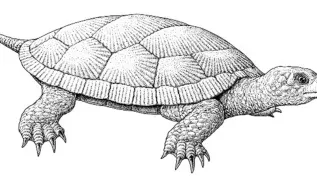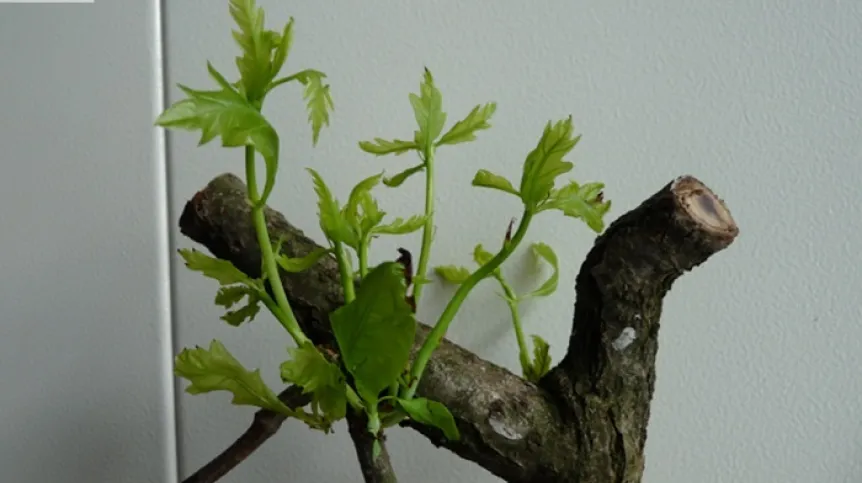
Scientists have proven that 800-year-old pedunculate oaks can be multiplicated by the in vitro cloning method. Previously, this was only possible for up to 300 years old oaks. Their work will enable the preservation and protection of the genetic resources of valuable specimens growing in Poland.
Dr. Marcin Michalak from the University of Warmia and Mazury and Professor Paweł Chmielarz from the Institute of Dendrology of the Polish Academy of Sciences and colleagues were looking for effective methods to clone the oldest Polish oaks. Recently, they focused on pedunculate oaks (Quercus robur L.) of various ages (up to 800 years). They assessed their regenerative potential using a method called 'micropropagation'.
'Research on the possibility of using in vitro cultures to preserve the genetic resources of the oldest Polish oaks can be described as a marathon - not a sprint, because it took many years,’ says Dr. Michalak who, together with Professor Paweł Chmielarz, was the originator of the research project. He emphasises that this involves work on preserving trees that grow very slowly, so 'it is difficult to expect quick results in their case.’
Why exactly do scientists want to clone the oldest oak trees?
'This research may enable the protection of some of the oldest and culturally valuable trees growing in Poland,’ says Dr. Michalak. He adds that, together with yews, oaks among the oldest groups of trees growing in Poland. They also appear in legends, including the one related to the origins of Poland.
'These trees are also interesting for cognitive reasons', the researcher continues. 'There is a nagging question: why did these particular specimens manage to survive for hundreds of years? Moreover, they have grown in changing environmental conditions, and yet they remain in good condition. Therefore, they probably have some set of traits related to longevity and the ability to adapt. Knowledge of these traits would be very valuable.
'Remember that some of these trees are reaching the end of their lives. All this makes their clones worth preserving.
'One of the methods of preserving genetic resources ex situ (i.e. outside the place where they occur naturally - editor's note) is the cultivation of clones in in vitro conditions (according to specific procedures, in the laboratory - editor's note), e.g. at a reduced temperature. This method is commonly used for valuable clones in horticulture, e.g. currants. We also wanted to develop a method of introducing all oak trees growing in Poland into in vitro cultures, regardless of their age. Thanks to this, the method can be used in the future, e.g. to create a forest of maple trees of selected trees in the State Forests.’
Why are scientists testing this method for oak reproduction?
Why not use acorns for this, or propagate them vegetatively, like garden plants, e.g. by making traditional cuttings? Dr. Michalak explains that acorns are the offspring of mother trees, so they have a different genotype. 'Because of this, we do not know what traits they will inherit from which of their parents. Moreover, not all the oldest oaks bear fruit. Additionally, as the oaks age, the quality of the acorns they produce decreases. And the maximum storage time for good quality acorns is three years. In the case of oaks, it is not possible to use typical methods for vegetative propagation of trees, such as cuttings or grafting. Oak tissues have poor rooting ability, and grafting does not work on a larger scale due to the poor efficiency of this procedure.’
The scientists have refined a method that allows cloning in vitro by using the micropropagation of sprouts. This method, in short, involves introducing a fragment of the sprout along with the growth cone into in vitro cultures. Thanks to this, such a sprout not only has the ability to grow in in vitro cultures, but also produce subsequent shoots. This allows to create collections of pedunculate oak clones of various ages in vitro.
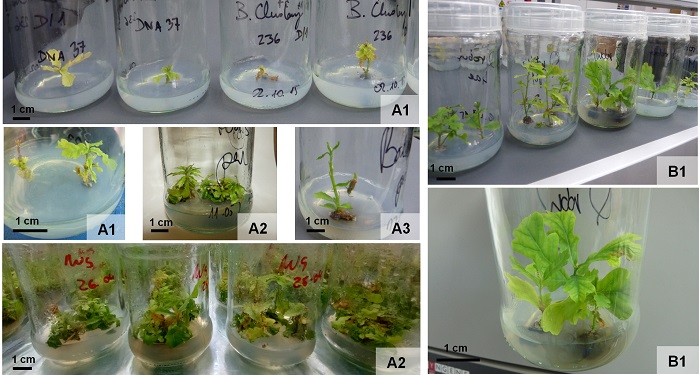
‘They did this using material taken from the oldest Polish oaks, and the success was that all 67 tested specimens could be reproduced in vitro, even 800 years old pedunculate oaks,’ says Dr. Michalak. In the beginning, the scientists did not expect the method to be so effective.
Previously, it was possible to clone up to 300 year old oak trees in vitro, which means that the new method extended this age limit by over 500 years.
In the paper published in Plants, researchers refer to the results obtained by Spanish researcher Professor A.M. Vietez and her colleagues, who used the in vitro micropropagation method on 70-300 years old pedunculate oaks. Why couldn't the Spanish team clone even older oak trees? 'It seems to me that the problem could have been related to the method they used to sterilize tissues before introducing them into in vitro cultures,’ says Michalak.
What did the research conducted in Poland look like?
First, using mountaineering techniques, the researchers collected woody branches from 67 selected trees. The branches were later cut into smaller, approximately 25-30 cm long fragments, and pre-cleaned.
Then the sprouts were grown in pots at a temperature of 25 degrees Celsius. The goal was to obtain the so-called epicormic or adventitious shoots. It was the period of phytotron cultivation, during which the woody shoots were placed in containers with moist perlite. The cultivation was carried out under specific lighting parameters (16 hours of daylight/8 hours of night), at a temperature of 25 degrees Celsius and high air humidity (80-90%).
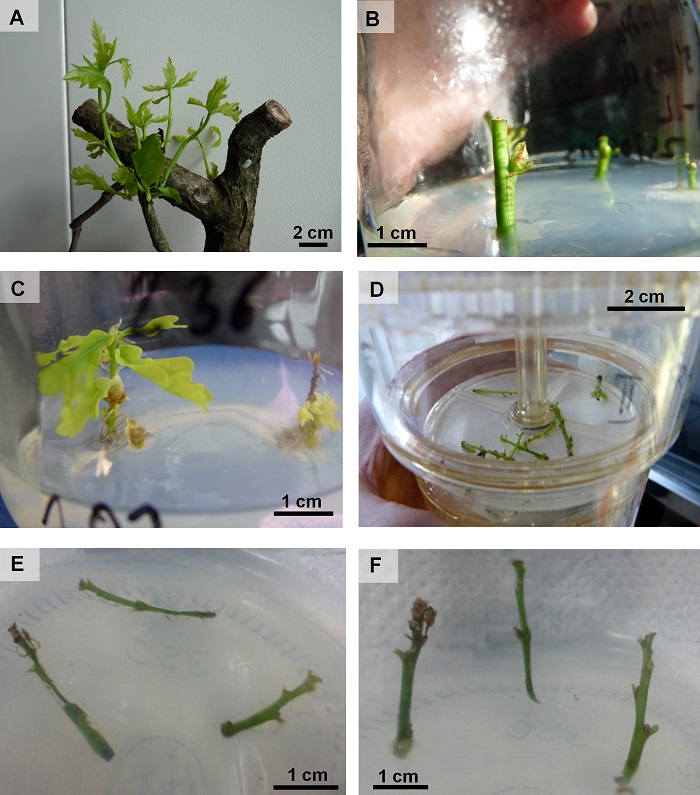
Dr. Michalak explains that obtaining sterile in vitro cultures is extremely difficult. 'This applies especially to old trees, where numerous microorganisms occur not only on the surface, but can also penetrate the interior, e.g. inhabit conductive bundles and intercellular spaces. Successful initiation of in vitro culture requires the elimination of all microorganisms. Therefore, unlike the Spanish team, in our research we paid much more attention to the material immediately after harvesting.’
The collected woody shoots were mechanically cleaned and then treated with sodium hypochlorite, which has disinfecting properties. Additionally, to ensure good water conduction and eliminate microorganisms inside the woody shoots, the conductive bundles were 'vented' by placing the lower ends of the shoots in boiling water. 'The woody shoots prepared in this way allowed us to obtain sucker shoots, which were subjected to additional sterilization before being introduced into in vitro cultures', says Dr. Michalak.
The scientists tested several sterilization protocols with different compounds. The best results were achieved with mercury chloride. 'Only after using this compound were we able to obtain numerous sterile in vitro cultures from the oldest oak trees growing in Poland,’ he says.
After sterilizing the shoots, the scientists placed them in vitro on Woody Plant Medium (WPM) enriched with hormones, such as 6-benzylaminopurine (BAP), indolyl-3-acetic acid (IAA) or indolyl-3 acid. -butyric acid (IBA).
After obtaining shoots with well-developed leaves, the next stage was to start the rooting process on rooting media. In vitro plant growth is possible thanks to the use of appropriate media, which are a mixture of solutions containing essential macro- and microelements and additives, such as vitamins, amino acids, sugars (as an energy source) and growth regulators.
What was the impact of the culture system and the composition of macro and microelements on the growth of shoots in vitro? 'Initially, we had high hopes for a semi-liquid culture system using a bioreactor. This is a relatively new method that is increasingly used in shoot cultures in in vitro conditions,’ says Michalak. However, the best result, i.e. the longest shoots and the highest number of shoots in in vitro culture, was obtained when the shoots were placed horizontally on WPM medium. Its exact composition was developed by McCown and Lloyd in 1981.
'As far as the composition of the nutrient solution is concerned, I see an area for further research, allowing for its refinement, which will enable the shoots to be kept longer in vitro and their rooting to be even more effective,’ continues Dr. Michalak. He adds that such research is time-consuming and requires the cooperation and effort of many people, especially in ensuring that the shoots are kept in proper condition in in vitro cultures. 'But I am hopeful and very happy with the results so far,’ he says.
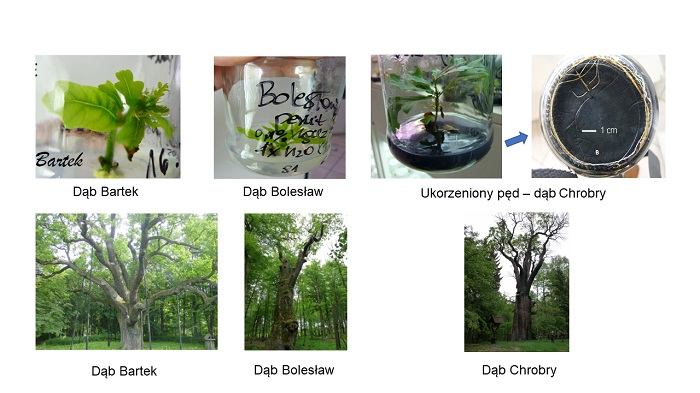
The last stage was to restore the seedlings (with a well-developed root system) to grow in the soil through acclimatization.
The researchers emphasise that during the difficult stage of acclimatization and transfer of plants to ex vitro conditions, large losses occur among the grown seedlings. 'In vitro conditions are very favourable: high humidity, lack of pathogens, etc. When the seedlings return to the soil, they have to get used to coexistence with other organisms again,’ Michalak says.
All examined ancient monumental oaks were successfully introduced to in vitro conditions. However, the problem at the current stage of research is the rooting and re-acclimatization of seedlings to ex vitro conditions (stages of micro-reproduction that do not take place in vitro, i.e. in a test tube in the laboratory - PAP). 'We introduced all of the oldest trees examined to in vitro conditions, but not all of them could be rooted,’ says Michalak.
The developed method has already made it possible to propagate (obtain a complete seedling with shoot and root) several of the 21 monumental oaks tested at the beginning, including one of the oldest oaks in Poland: Rus from Rogalin. Among the Rogalin oaks, named after legendary rulers of Slavic countries, Czech is already dead, Lech's health is deteriorating. A four-year-old Rus oak seedling (two years in vitro + two years ex vitro in a container), measuring approximately two meters, was planted in 2019 in Rogalin in the local park next to the mother tree. An interesting fact is that the oak tree began to produce its first acorns at the age of six. 'Typically, oak trees bear fruit around twenty years of age. This would indicate that it retained the so-called +age memory+,’ Michalak says.
Genotype is important for the effectiveness of shoot formation, say the authors of the study. To put it simply, this means that different trees 'have different abilities to multiply shoots in vitro,' says Dr. Michalak.
This ability to multiply is not correlated with age: several of the oldest oaks had a greater ability to multiply shoots in vitro than much younger specimens (e.g. 20, 70, 100 or 300 years old).
Dr. Michalak points out that scientific literature contains information that as trees age, they lose the ability to regenerate in vitro, which has not been confirmed by Polish research. 'Perhaps these trees have survived for hundreds of years because they share a common genetic trait,’ he continues.
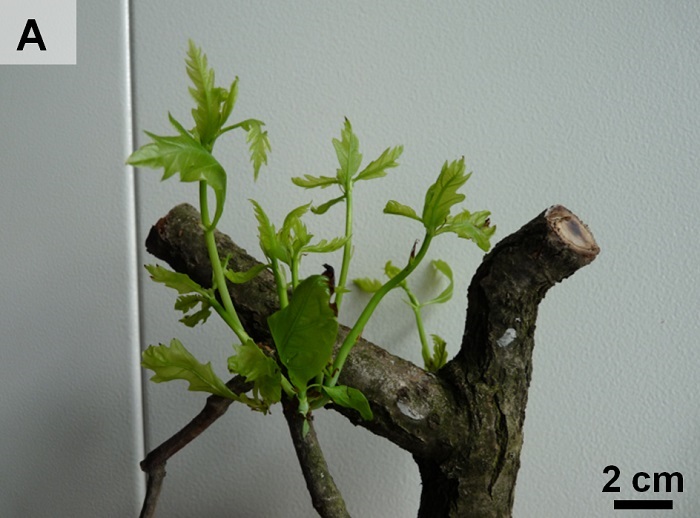
More research is needed
The dendrologist from the University of Warmia and Mazury believes that it is worth paying more attention to the oldest oaks, which 'may contain a lot of valuable information.’
'Maybe thanks to this we will be able to learn the secret of their longevity and ability to adapt to changing environmental conditions. In the future, we may be able to grow a forest resistant to climate change, and even further - grow trees on other planets,’ he says.
He emphasizes that such ideas are not science fiction: 'NASA is currently conducting research on growing plants in vitro in weightlessness.’
He adds that scientists must hurry with their research because the life of many ancient oaks is coming to an end. Among the deciduous trees in Europe there are monumental pedunculate oaks (Quercus robur L.), which are estimated to be about 1,000 years old, such as the Granit oak in Bulgaria, Kongeegen in Denmark, the Stelmužė oak in Lithuania and the greater oak in England. In Poland, the oldest group of trees are are 500–800 years old pedunculate oaks.
The number of the largest and oldest trees in the world is constantly decreasing due to climate change, air pollution, but also improper conservation work or vandal attacks.
'Unfortunately, in addition to natural causes, there are also acts of vandalism,’ the scientist adds. In 2010, unknown perpetrators set fire to the Napoleon oak, and in 2014, the monumental oak Chrobry burned down. In 2019, Mieszko I was set on fire - the oldest oak in the Masovian Voivodeship, estimated to be approximately 600 years old.
The oak cloning method was developed with the involvement of employees of the Laboratory of Reproduction Biology and Population Genetics (Dr. Szymon Kotlarski, Magdalena Sobczak, Paulina Pilarz, Agat Obarska and Danuta Szymańska), in collaboration with Dr. Dymitry Kulagin from the Forest Institute in Gomel, Belarus. The research was co-financed by the General Directorate of State Forests in Warsaw.
PAP - Science in Poland, Anna Mikołajczyk-Kłębek
amk/ zan/ kap/
tr. RL


